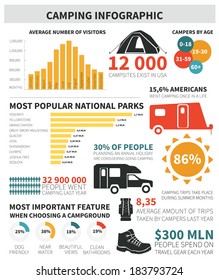A double-wall design that's both breathable and water resistant. They can be a lot more comfy than single-wall outdoors tents in winter but can be less large and open sights much less.
Created to withstand high winds and dropped snow. They might also have thicker posts and extra guylines to enhance rigidness.
Whether you're glamping or backpacking, these camping tents can manage a selection of wintertime problems. They're perfect for those looking for a cozy and cozy resort in the backcountry.
1. Weatherproofing
Numerous camping tents feature waterproofing that's boosted by polyurethane layers and long lasting water repellent (DWR) therapies. At some point, nevertheless, modifications in temperature and long term direct exposure to sunlight can break down the camping tent's safety coatings. Revitalizing these with seam sealant or a DWR therapy can help safeguard your camping tent from dampness damage and prolong its beneficial life.
When leaving your tent, make the effort to meticulously fold and fit each shockcorded pole section right into area. This will avoid unnecessary stress and anxiety that can weaken or chip the pole sections and cause architectural troubles when you set up camp.
Also, utilize the Disappear concept when picking campsites. Pick areas that are without rocks, ache cones and various other debris that can puncture or abrade the camping tent floor and fly. Likewise take into consideration bringing an impact, which is a custom-cut ground cloth made specifically for your tent's floor plan and will secure it from dust, grit, stones and various other sharp things.
2. Air flow
If you are camping in the Everglades' humidity or Death Valley's heat, you need a tent with good ventilation. Ventilation is an important consider maintaining comfort and eliminating mold and mold that can make your camping tent pointless.
The air flow system of a four-season camping tent is created to get rid of cozy, damp air and replace it with cooler, drier air. This air exchange minimizes condensation by eliminating wetness from the air before it can choose the walls and ceiling of your tent.
To ensure your tent has adequate ventilation, look for breathable products and flexible vents. Additionally, raise your camping tent somewhat off the ground to improve airflow. Another key element of a good ventilation system is making use of a stove jack, which gives a secure leave factor for your outdoor tents's smoke pipe to prevent carbon monoxide poisoning.
3. Livability
While a 4 period camping tent may not be the best option for ultra-light backpackers, it is essential for those intending to camp year-round. Buying this kind of shelter saves cash on different configurations and decreases gear turn over. It likewise enables you to explore landscapes at various seasons, opening up quiet off-season experiences and attractive winter months surface.
If you select a durable and spacious 4 season tent like the KUIU Tornado Celebrity 2 or the Samaya 2.0, ensure that it offers ample weather condition security. This includes a durable framework, strong posts and materials developed to resist high winds and lost snow. Seek joints that are double-stitched and surfaces like water repellent, mold & UV resistance coatings that shield your financial investment from the elements.
In addition, select a double-wall design for the very best livingability. Single-wall models can be water-proof however have issues with condensation. They can additionally be as well hot for summer season and not well fit to rain.
4. Storage space
Storing your outdoor tents in a shaded location protects it from the rough UV rays of sunlight. Long term exposure to these rays can degrade and deteriorate the fabric with time, making the tent much less resilient. It's additionally essential to regularly examine the stored outdoor tents for signs of dampness and invasive bugs.
Storage camping tents are frequently easier to use than irreversible structures since they don't need portable shelter any kind of modifications to your residential or commercial property. They additionally provide the adaptability of moving them around your outside space to deal with various storage requirements.
4-season tents are developed to sustain severe climate. They typically include inflexible structures to remain secure in high winds and thicker walls to supply heat against snow and tornado winds. They strike an equilibrium between important attributes like weather security, weight, and indoor space to fit your certain journey goals. The NEMO Kunai 2 and Hilleberg Nammatj 2 are both examples of 4-season tents that stabilize climate protection, weight, and livability.
